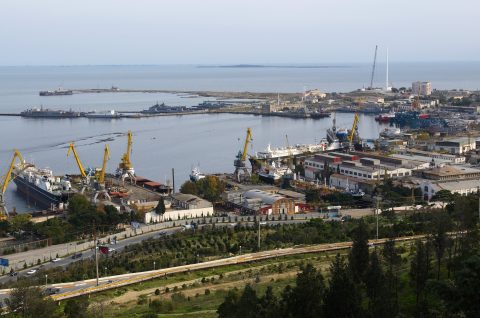Hungary gears up to become EU gateway New Silk Road

The Hungarian government is to deploy eight new intermodal yards; seven in the countryside and one near Budapest to accommodate rail freight traffic from the Far East to Europe. It is eyeing a strategic position as an eastern European gateway on the New Silk Road.
While Slovakia is gaining momentum on the New Silk Road, Hungary still has work to do before it can reap the benefits of its geographic location. The current infrastructure is limited to the wider area of Budapest, and the facilities are not up to date. Yet, Hungary is to be connected on two international lines that are to reshuffle the cards, explained Gyuri Firbás, a logistics consultant to the government.
“We will be connected through the Budapest-Belgrade line, which will form an extension to the Greek ports of Piraeus and Thessaloniki, and to eastern Poland, where we will connect to the traditional route through Belarus and Russia. We are focussing on the flow of traffic moving from the south-east to the north-west, and from the south-west to the north-east.”
Adriatic connection
The Budapest-Belgrade line is a 336- kilometer rail line connecting the Serbian and Hungarian capital. It is to serve traffic flowing through the port of Piraeus, which was recently acquired by the Chinese company COSCO. The Chinese government plans to boost the port as a maritime gateway into Europe. Although many have seen the railway line as a solely Chinese project, Firbás points out the benefits to Hungary.
“We will not only be connected to the Greek ports of Piraeus and Thessaloniki. Once Montenegro has joined the EU, the port of Bar will be added to the network of European ports accessible to Hungary. The Bar-Belgrade railway connection is already there. Thus, as a landlocked country, we will be connected to the port of Koper (Slovenia), Bar, and the Greek ports.”
Link to Poland
A new railway line between Budapest and Malaszewicze is to enable the Hungarians to tap into the growing traffic flow between China and Poland, Firbás explained. “Right now, when traffic enters Europe at the Malaszewicze-Brest border, it is mostly forwarded to Germany or the Netherlands. With a railway connection via Kosice in Slovakia, we want to form a transit line to the Southern European countries such as Slovenia, Croatia and northern Italy.”
With this new connection, the country is to be another destination for traffic via Russia, an important trading partner of Hungary. This connection is more important than the possible route through Ukraine, Firbás explained. The Hungarian-Ukraine border point of Zahony-Chop is not capable of dealing with large traffic volumes; the people who work there do not speak foreign languages, are old of age and the facilities are outdated. Due to deteriorated relations with Ukraine, the volumes of traffic through this border crossing has decreased over the years.”
Infrastructure upgrades
But, the infrastructure in general needs upgrading, the consultant admits. Hence, the government is willing to invest in railway connections, terminals and equipment. “If you look at the current situation, you would not believe we are at the frontline of the EU. We have a single-track, low speed railway network that was last upgraded in 1968. It is mostly organised around the capital, but the countryside lacks sufficient connections. And further, all railway stations must be replaced.”
Moreover, if Hungary is to gain importance on the international railway network it should improve customs practices, as there have been reports of counterfeit products entering from the Far East via Hungary. According to Maja Bakran Marcich, Deputy Director-General of the Directorate-General for Mobility and Transport (DG MOVE) at the European Commission, DG MOVE has taken the lead to propose innovative solutions to make border-crossings of the western Balkan states more efficient. “A declaration was endorsed by all Western Balkan partners in the margins of the last TEN-T days which took place in Ljubljana last April, focusing both on procedures and on infrastructure upgrading.”
Competitive position
Hungary is not the only country in Eastern Europe with the mission to gain importance on the New Silk Road. On its northern border, Slovakia is moving at full speed with similar ambitions, but tapping into traffic via Ukraine. It has a well-functioning border with this CIS country and a transshipment facility in Košice. Moreover, its capital Bratislava is near the border with Vienna, which on its part is investing in the west-east connection. However, this does not mean that traffic should not be forwarded to Hungary, explained Firbás.
“Hungary is in particular looking at traffic destined for the southern countries. Moreover, several Chinese car manufacturers have recently confirmed plans to establish a branche in Hungary. BMW, Audi and Mercedes will start manufacturing products here, and all of these companies have plans to produce electric cars.”
According to the consultant, the presence of these companies will boost import of heavy metals, such as kobalt and koper and eventually the export of finished car products. “For Chinese companies Hungary is an attractive country; we have an attractive tax regime, sufficient manpower and cost-effective rail transportation due to the fact that the country is flat. For rail operators, travel through Hungary is cheaper and easier compared to other European countries.”
Also read:





